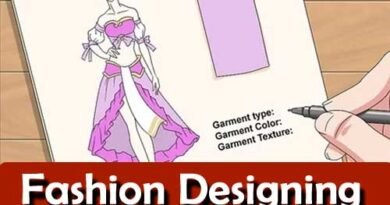Western Dress Part 02
Practical Applications in Fashion Design
- Haute Couture and Designer Collections:
- Innovative Designs: Couturiers use draping to create avant-garde and statement pieces that push the boundaries of fashion.
- Customization: Draping allows for bespoke garments tailored to individual clients’ preferences and body measurements.
- Ready-to-Wear Collections:
- Prototyping: Designers use draping to create prototypes and samples before finalizing patterns for mass production.
- Efficiency: Draping helps streamline the design process by visualizing and refining garment shapes directly on the dress form.
- Red Carpet and Special Occasion Dresses:
- Elegant Silhouettes: Draping techniques are used to create glamorous and sophisticated dresses worn by celebrities and clients for special events.
- Attention to Detail: Draping adds intricate details and textures that elevate the aesthetic appeal of evening gowns and cocktail dresses.

Contemporary Adaptations and Trends
- Digital Draping Software:
- Virtual Prototyping: Allows designers to simulate draping effects digitally, enhancing design visualization and efficiency in the creative process.
- 3D Modeling: Integration of 3D draping technologies for accurate digital representations of garments before physical production.
- Sustainable Draping Practices:
- Ethical Fabrics: Use of sustainable fabrics, such as organic cotton and recycled materials, in draping to promote eco-friendly fashion.
- Zero Waste Design: Techniques like pattern cutting and draping that minimize fabric waste during garment production.
- Cross-Cultural Influences:
- Fusion Designs: Incorporation of draping techniques from diverse cultures and traditions into Western dress styles, creating hybrid fashion trends.
Education and Skill Development
- Fashion Design Programs:
- Curriculum: Incorporation of draping courses in fashion design programs to teach students fundamental techniques and advanced applications.
- Hands-on Learning: Practical workshops and studio sessions where students practice draping on dress forms under the guidance of experienced instructors.
- Portfolio Development:
- Showcasing Skills: Inclusion of draping projects and illustrations in portfolios to demonstrate technical proficiency and creative flair to potential employers or clients.
- Professional Preparation: Preparation of students for careers in fashion design by emphasizing the importance of draping skills in design studios and fashion houses.

Conclusion
Western dress draping is a dynamic and essential skill in fashion design, offering designers endless possibilities for creativity, innovation, and expression. By mastering draping techniques, understanding fabric behavior, and embracing contemporary trends, designers can create garments that are both aesthetically captivating and technically proficient. As fashion continues to evolve, draping remains a cornerstone of the design process, bridging tradition with modernity and shaping the future of Western fashion through craftsmanship and visionary design.
